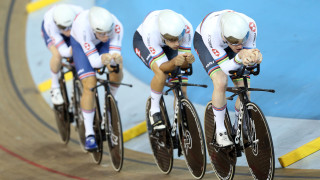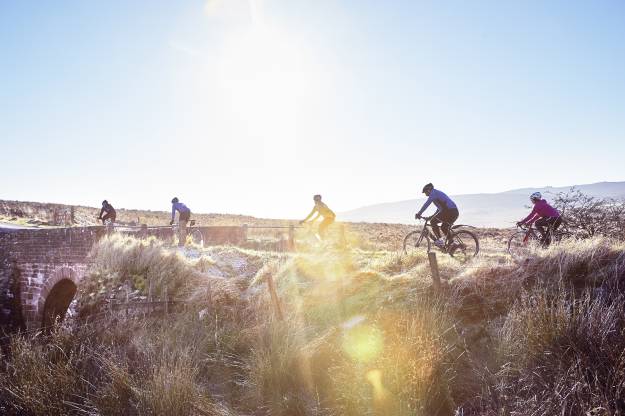Knowledge Level: Intermediate
What’s the most important bit of advice for optimising chain life and drivetrain efficiency?
Keep your drivetrain clean and well lubricated. Don’t wait for tell-tale signs such as excessive drivetrain noise, poor shifting, chain-suck or squeaking. Never leave your chain wet, dirty and un-lubed. It only takes 5 minutes to wash your bike and re-lube your chain, so there’s really no excuse. This is particularly important in the winter when salt on the road can lead to overnight corrosion if left.
How to wash your bike in 5 mins
What lube should I use?
For the majority of riding, you should use a quality cycling specific wet lube. Although this can potentially attract more dirt than a dry lube, longevity tends to be better and you can minimise dirt attraction by wiping off any surface excess.
How to degrease and lube your bike chain
How do I know when to replace my chain?
Part of your regular drivetrain maintenance should be to check for chain stretch and wear using a chain checker. This is a cheap and simple to use tool and, by not letting chain wear and stretch go too far, you can often avoid having to also replace your chainrings and cassette. As a rule of thumb, check chain wear every 500km on the road and every 150km off-road.
Do I need to degrease and re-lube a new chain?
The advice from most of the major chain manufacturers is that the lubrication chains come with is ideal for riding and doesn’t need to be removed. Simply fit, ride and re-lube when necessary. However, it’s always worth double checking the manufacturer’s advice for both the chain and the lube you intend to use.
Any other tips for prolonging chain life?
Ride in a mechanically sympathetic manner. For double and triple chainring set-ups try to keep as straight a chain-line as possible. Shift in anticipation of hills and try to avoid shifting under heavy load.
The Story of a Chain
In the lead up to the Rio Olympics, the Great Britain Cycling Team were on the lookout for a new chain partner, as they were having a problem with their track sprinters snapping chains during their starting efforts. A chance encounter at the University of Bristol Engineering Department with Renold led to the start of a collaboration in the quest for the strongest, most efficient and fastest chain possible, which is now available to buy. We spoke to Renold to find out more.
How do you make a chain strong and efficient?
“The simplest way to make a chain stronger is to add more material but that’ll also make it heavier. This doesn’t necessarily make it less efficient but it will increase inertia and so will take more energy to accelerate. The other way is to optimise how the chain fits together. A chain is composed of round components, bushes and pins, and flat components, the plates. So, the fit between the round and flat components is critical and, if you can make that optimal, you can make a chain stronger without adding material.”
How important is the lubricant used?
“Very. We developed a special lubricant that we use on our Synergy industrial chain, which the track chain is derived from, which has very low friction co-efficient properties and is designed to work with the surface treatment that we use on the pins and bushes. This results in a very efficient low friction system. The chain comes pre-lubricated and ready to race.”
What sort of gains does the chain give?
“Efficiency gains vary depending on the load on the chain but you’re looking at between 0.5 and 1%. When you consider that a really good chain will approach the high nineties in terms of percentage efficiency, finding another percent is massively significantly, especially when you consider the winning, and losing margins, in elite sport.”
Is the chain that’s available to buy the same as the all conquering Rio chain?
"We’re constantly developing and improving our chains but the chain that’s now available to buy is essentially the chain that was used in Rio with some real world use adaptations. These include electroless nickel plating on the inner and outer plates so, if you did decide you wanted to use the chain on a single-speed bike or a BMX outside, it’d have better corrosion resistance.”
Are there any other advantages to the chain?
“One of our test pilots of the chain has been daily commuting on a single-speed and he reckons that he’s got four times the life out of the chain compared to a regular chain. This wasn’t a design goal but is a happy bonus of improved efficiency. Also, if chain durability is improved, so too is component, chainring and sprocket, life.”
Renold Velo CT, in celebration of the one hundred and thirty eight years since they invented the roller chain, have produced a limited run of 138 numbered sets. Each set retails at £250 and includes:
Renold Velo CT high performance single speed chain (112 Links)
- Laser-etched Union Jack Connecting link with spare Spring Clip
- Limited edition numbered Chain Wear Gauge
- Partnership Booklet
Go to www.velo.renold.com for more information


















